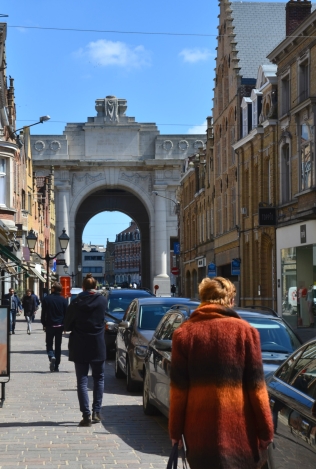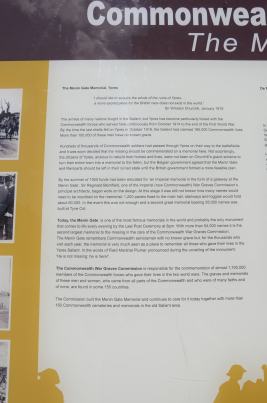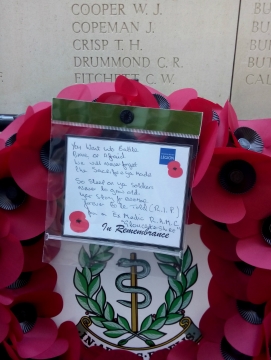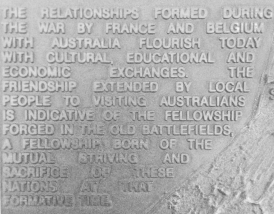Today is Saturday the 11th of July. Today, I, like so many other Bosnians, commemorate the Srebrenica genocide, 25 years after the targeted mass murders of more than 8.000 Muslim boys and men. Today is also the 11th of July, a public holiday of the Flemish Community in Belgium. Two apparently very different remembrances, two very different political implications, or not?
I was about three and a half years old when my parents took my brother and me under their arms and fled when the (para)military Četnik troops turned their genocidal logic into atrocities in Višegrad, my hometown in Eastern Bosnia and Herzegovina. That region of Bosnia has become notorious as the place where ‘ethnic cleansing’ was successfully carried out, and where the Srebrenica genocide took place in 1995.
While the genocide has officially been condemned by the International Criminal Tribunal for the former Yugoslavia (ICTY) – at least, the supreme commander Ratko Mladić, who co-led the mass killings, was convicted in November 2017 – the genocide is still openly denied by many political figures and residents in former Yugoslavia (both within de facto divided Bosnia and Herzegovina as in the neighboring countries). This denial is literally based on an ideological model of dehumanization, in which a group of people, Bosnian Muslims in this case, pose a threat to the ‘purity’ of a mythologized ‘our Serbian people’. Not only does this invoke an illusion of purity in an ethnic nationalist sense, but it also denies and forgets various forms of (convivial) living together that existed and still exist in many ways.
Additionally, the rulings of tribunals such as the ICTY are in a way misleading because they rest on very specific regulations whereby genocide may or may not be legally condemned. These are regulations based fundamentally on a legal contextualization of facts and the ability to testify about such facts. As the Armenian-French philosopher and historian Marc Nichanian explains the issue with this in the context of the Armenian Genocide: “Genocide is not a fact because it is the very destruction of the fact, of the notion of fact, of the factuality of fact.” It often destroys the possibility of a factual demonstrability of genocide because it literally kills those who might testify and destroys any evidence its acts. Because of this, in many cases, the full nature and mass scale of a genocidal extermination machine does not come out in all its horror.
Genocidal destruction is never merely the demonstrable physical massacre of groups of people. Most often, it also means annihilating their ‘soul’ in a certain way; erasing their existence and right to exist. It saddles future generations with the unbearable weight of learning to live with this extermination. They are also burdened, in the ever so popular lexicon of contemporary psychology and psychiatry, with all kinds of ‘traumatic symptoms’. Yet, the ‘evidence’ of what happened often lies in our bodies: bodies of those that literally no longer exist and cannot be found, as well as living bodies that live on with all kinds of physiological, affective, symbolical and spiritual wounds.
On this same July 11, Flanders celebrates the day of the Flemish Community in Belgium. For some Flemish people, this is a mythical reminder of the Battle of the Golden Spurs at the onset of the 14th century that implicitly and explicitly clarifies who is and is not ‘Flemish’. The Flemish lion roars, as the slogan goes. The Flemish lion that seems to increasingly accept an ethnically nationalistic ideology, while it is precisely these kinds of ideas that have led to the atrocities that gave the 11th of July that other meaning. Because, whether you like it or not, ‘our people first’ is a cradle for ‘our people only’. However much that ‘our’ may be a historically specific variable.
These seem to be two very different memories linked to the same date, two very different political implications and contexts. Yet, and perhaps partly because of that, for me it is one of the clearest examples that (painfully) illustrates how forms of identification, historiography, remembering and belonging can co-exist and collide at the same time.
Besides the fact that July 11 symbolizes the genocide in Srebrenica, atrocities happened on other dates that are much less remembered collectively. For me personally, June 14 and 27 are at least equally penetrating dates. On those days in 1992 in my hometown Višegrad, 140 children, women and the elderly were burned alive in two houses a few steps away from my parental home. These events are known as ‘Živa lomača’ (‘live bonfire’ is the literal very unpleasant translation in English).
At the time, I was with my parents, brother and several family members in a refugee camp in Tekirdağ in Turkey. It was a matter of some fortunate – or faithful – occurrences that we had not also returned to Višegrad. Indeed, there were reports from the genocidal ideological apparatus that it would be safe to return to our city, and that those who did not return would lose their jobs. Although these atrocities in my hometown have never been officially labeled as genocide, I hope you understand why I see these events as fundamental parts of the genocidal machine. Bodies literally destroyed by burning and bereaved ones stripped of any human dignity because they could not even give their loved ones a dignified farewell.
While every year a political media circus emerges in and around Srebrenica on July 11 – often misused by politicians for their own purposes rather than with deep reverence for the victims and their relatives – the next day everything is calm again. Yet many women, without often any living male family members, remain behind, not only on July 11, but on all those other days, searching for a glimpse of a body that was once their husband, son, uncle. Likewise, many young people remain stuck living with drastic unemployment rates and feelings of hopelessness, dreaming of ‘Europe’ as a mythical place of wealth and possibilities.
And, also for me, July 11 is related to every other day of the year. On all those other days of the year, sometimes the smallest memories or a reference to something that connects me to that genocidal war can unleash a host of experiences. For example, they can thoroughly disturb your sleep, they can magnify your fears, they can make you question your own humanity, … . In short, genocide also destroys lives because the embodied memory haunts people for generations to come. For me, this feels as a haunting ghost that you feel so intimately yet can never really interpret clearly. To paraphrase the insightful psychiatrist and critical thinker Frantz Fanon in the context of the Algerian decolonial war of independence: systematic negation of your humanity leads a person to keep asking themselves “in reality, who am I”? A question to which I, like so many dehumanized fellow human beings, have been trying to find an answer to almost all my life.
If we reduce a genocide to July 11, to one date, or one point, we forget that a genocide is never a snapshot, but a whole ideology with mass annihilation in different places and times. So, if we choose to remember and honor Leopold II in Belgium with statues, for example, we prefer a negation of degrading systematic destructions of people specifically focused on our fiction of ‘blackness’. If you exclaim during Sinterklaas (Saint Nicholas) that you keep an innocent childlike tradition alive by celebrating racialized representations of a black slave (‘zwarte Piet/black Pete), you contribute to the collective memory of slavery as a happy ‘civilizing’ event. And all these memories lead to the continuation of dehumanization, with potentially catastrophic consequences.
Acts with a genocidal logic are not performed by monsters, no matter how bizarre this may sound. They are performed by people, mainly men, with families, friends, etc. ‘Ordinary’ people who actingly profess their belonging through ‘atrocities-for-inclusion’, as Hannah Arendt already understood when she talked about Eichmann’s atrocities. They are ‘citizens’ like yourself, who gradually become more convinced of the idea that a certain ‘other’ group is not really human, because they are ‘Muslim’, or in many other contexts because they are ‘Black’, because they are’ Jewish’, because they are ‘Roma’, because they are ‘Queer ‘. Thus, because they are a perceived minority that questions the purity of an ethnic nationalism. A ‘purity’ grafted on the genocidal aversion of anything ‘different’ as the norm(al).
A genocidal logic suppresses many alternative histories and memories – in actuality, it destroys the possibility of such differences. This is exactly what, in Belgium, sustains the general denial and willful ignorance of the exterminations in Congo, this is also what drives Islamophobia. It is what leads to a continuation of genocide denial in Bosnia and Herzegovina and its neighboring countries.
The problem with most historiographies of immense atrocities is also that they pretend that everything is knowable. But our memories and national narratives are not direct representations, but stories that are shaped and distorted over time. Those distortions are not as individual as most of us think, they are fundamentally related to the socio-historical context. In other words, they are political.
These are uncomfortable truths. Truths that in our so-called “post-truth” world are like salt on all our imaginary illusions of innocence and structural denials.
Today, I commemorate the painful truth of Srebrenica. Today, I also commemorate the painful truth of my Višegrad. Tomorrow, I will be back in Antwerp, living and trying to grasp the longtermness of the genocidal logic.
What do you remember on July 11? Because, what we commemorate and remember, in what ways, and what we (un)deliberately forgot, are questions that are fundamental for the types of societal realities we want to pursue.




